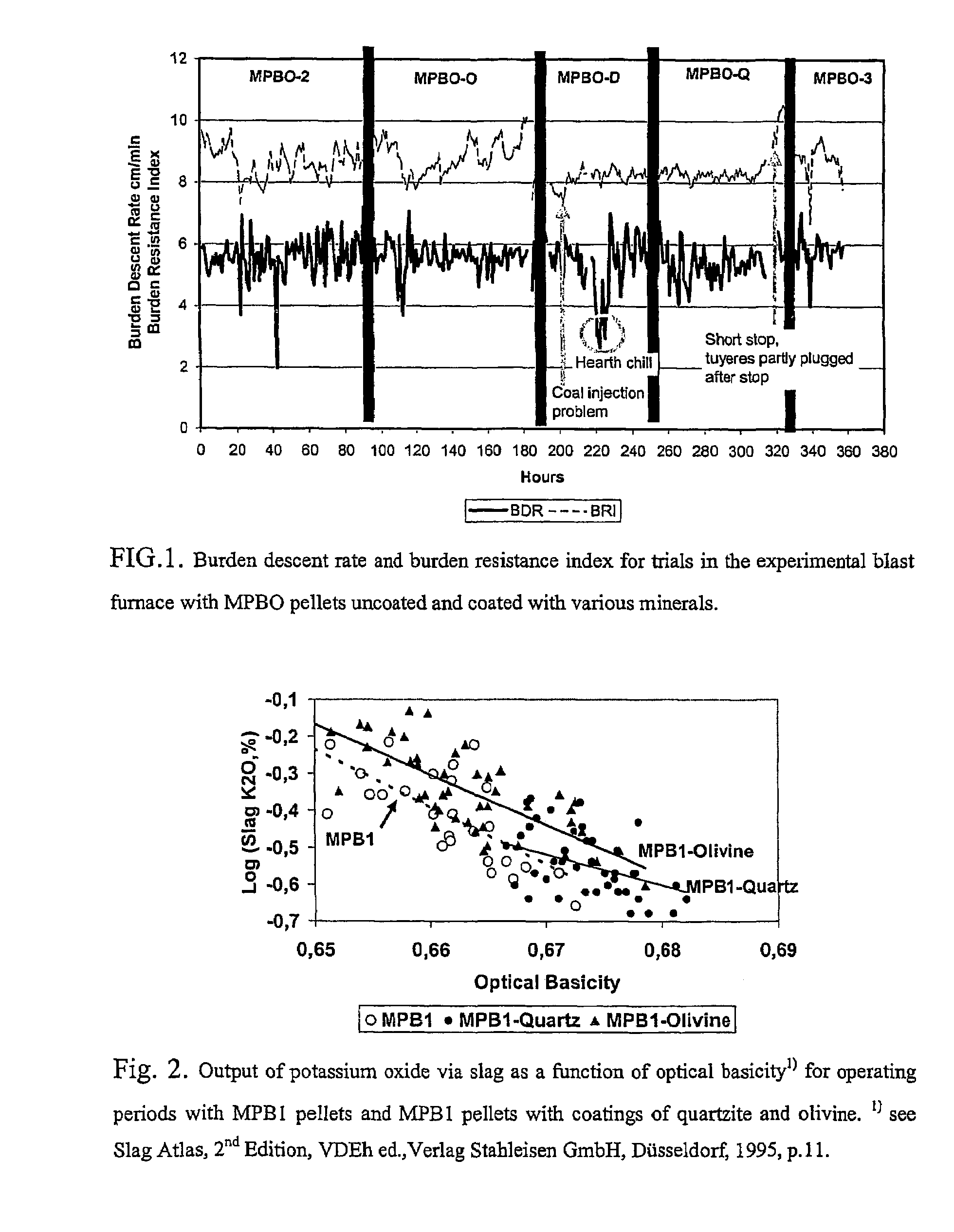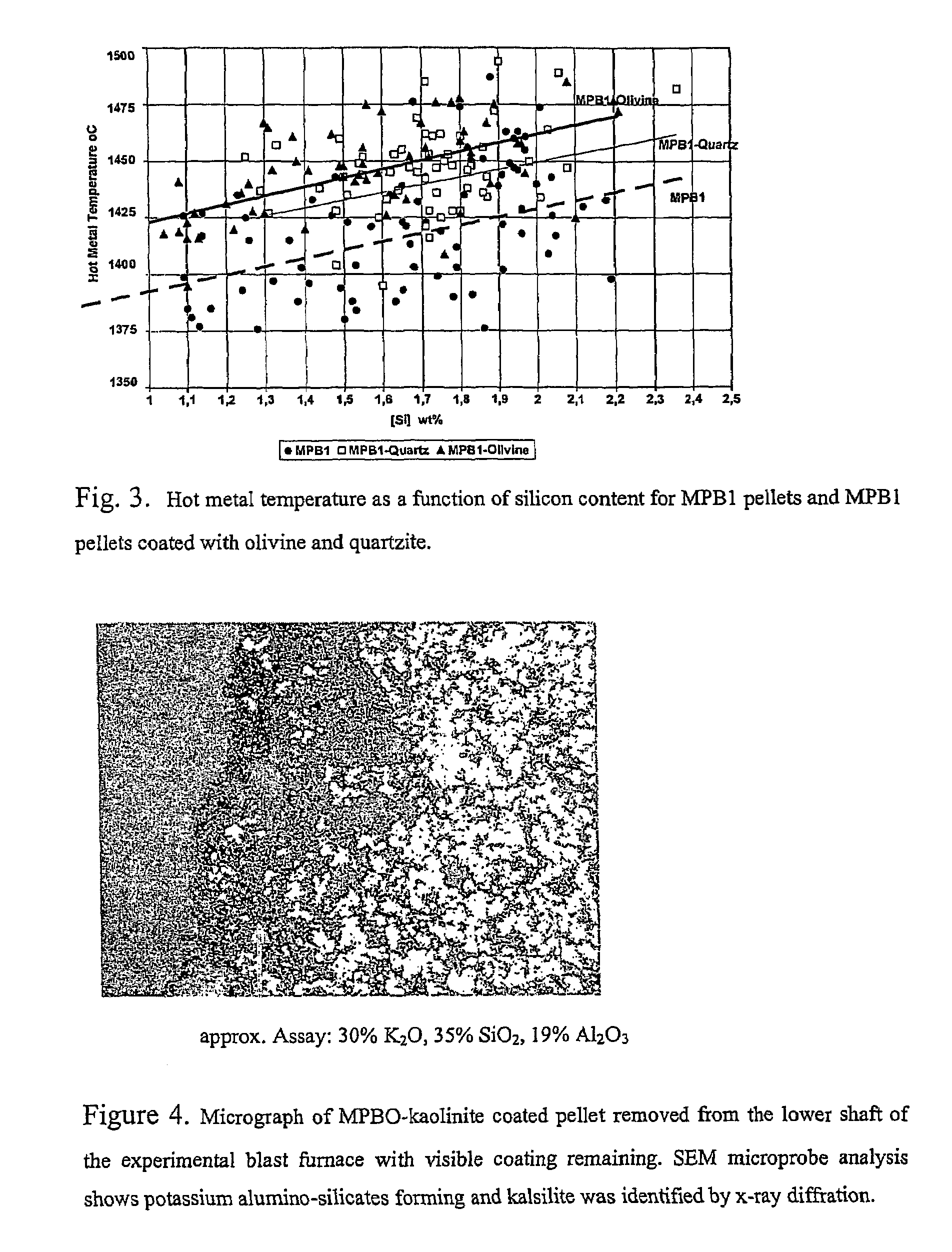Method to improve iron production rate in a blast furnace
a technology of blast furnace and production rate, which is applied in the direction of blast furnaces, furnace types, furnaces, etc., can solve the problems of affecting the stability of the melting zone and furnace hearth, affecting gas flow, and delaying further reduction and melting, so as to improve the melting behaviour of iron ore pellets and reduce alkali circulation , the effect of maximizing the reactive mineral surface area
- Summary
- Abstract
- Description
- Claims
- Application Information
AI Technical Summary
Benefits of technology
Problems solved by technology
Method used
Image
Examples
Embodiment Construction
[0030]The present invention relates to a method to improve iron production in a blast furnace being charged by iron containing agglomerates comprising contacting the chargeable iron containing material with a slag modifying effective amount of a dispersion of a particulate material. Said contacting occurring after iron ore agglomeration and prior to charging to the blast furnace shaft.
[0031]The chargeable agglomerated material of the present invention may be in any form that is typical for processing in a blast furnace. For non-limiting example, the chargeable material may be ores agglomerated to pellets, briquettes, granulates etc., or natural agglomerated iron oxide ores typically referred to as lump ore or rubble ore.
[0032]As used herein, “dispersion” means any distribution or mixture of fine, finely divided and / or powdered solid material in liquid medium. The similar terms “slurry”, “suspension”, etc. are also included in the term “dispersion”.
[0033]As used herein, “slag modifyi...
PUM
| Property | Measurement | Unit |
|---|---|---|
| temperatures | aaaaa | aaaaa |
| particle size | aaaaa | aaaaa |
| particle size | aaaaa | aaaaa |
Abstract
Description
Claims
Application Information
 Login to View More
Login to View More - R&D
- Intellectual Property
- Life Sciences
- Materials
- Tech Scout
- Unparalleled Data Quality
- Higher Quality Content
- 60% Fewer Hallucinations
Browse by: Latest US Patents, China's latest patents, Technical Efficacy Thesaurus, Application Domain, Technology Topic, Popular Technical Reports.
© 2025 PatSnap. All rights reserved.Legal|Privacy policy|Modern Slavery Act Transparency Statement|Sitemap|About US| Contact US: help@patsnap.com


